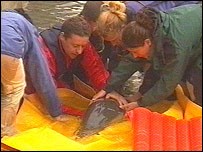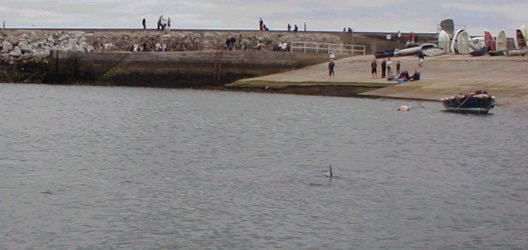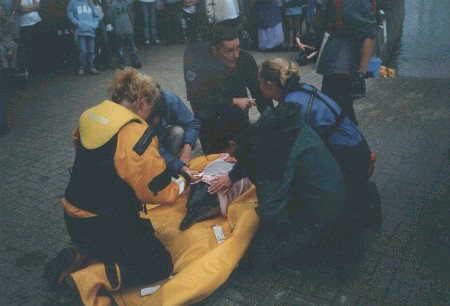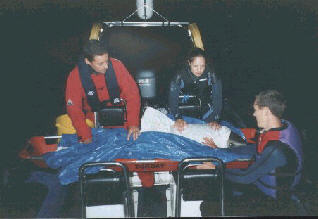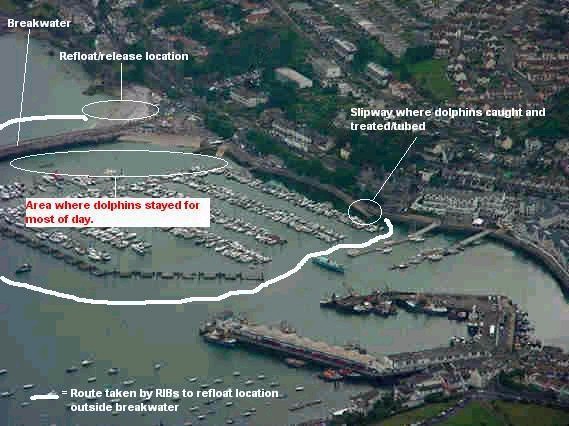|
RSPCA Inspectors; Becky Wadey, Neil Thomas and Steve Donohue arrived as well as BDMLR Medics; Janet Bailey, Gemma Barker, Kim Simmons, Melanie Hinde, Dave McDonald, Pete Marten, Howard Rushton and Jane Fletchpeters (these medics arrived at different times throughout the day).
Vet, Nick Lloyd, attended from the Kingsteignton Vet Practice and discussed the dolphins with myself and, of course, James Barnett on the phone. The RSPCA RIB was launched so we could carefully take a closer look at the animals. Nick, two RSPCA colleagues and I took a look at the dolphins. They appeared to be in reasonable condition but their swimming was confused and they had no reaction to any boats, even the large Lifeboat when it started up and motored out on an exercise.
We continued to observe the animals and a decision was made between myself, Nick and James, that if the animals came within the reach of us while we could stand in shallow water, we would restrain them and then deal with as if it were a stranding event. The dolphins came very close to the shore on a number of occasions but never close enough to handle.
The whole incident was gathering the public and locals and also the media. The BBC had a small unit 'shadowing' the RNLI and they filmed much of the incident.
The member of the public who had dealt with the animals the previous night came forward and gave us valuable information concerning their previous behaviour.
By approx 17.00hrs I was becoming very concerned about the dolphins behaviour. They had not moved away from the same approx 20m x 20m area for a number of hours and their respiratory rate was raised to an average of 6-8/min. One of the animals was beginning to role on its side and both were lifting their heads above the water when surfacing. By this time I was the only RSPCA rep their and we had all the Medics present. After a discussion with James and Nick, who had now left to be called back if needed, the tough decision was made to take control of the incident and attempt to catch the dolphins.
|
